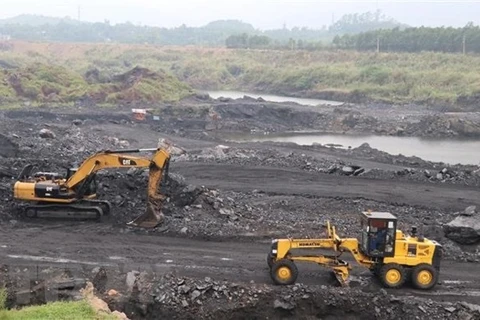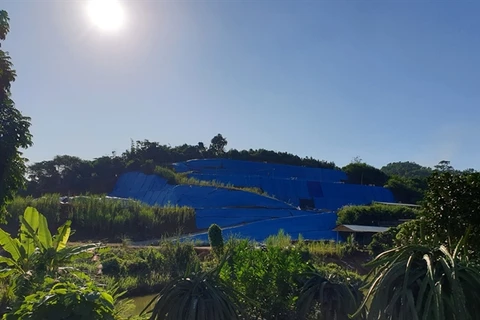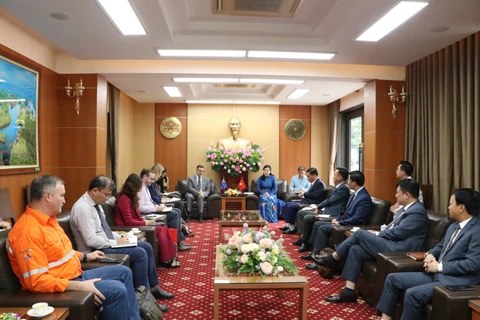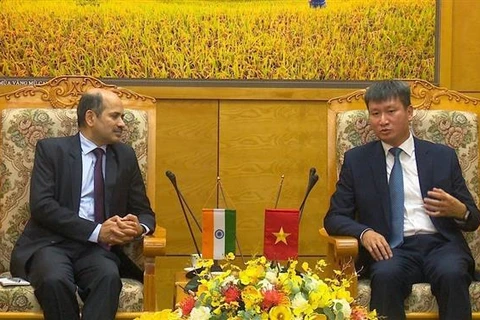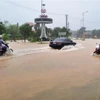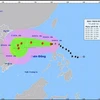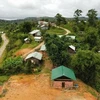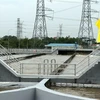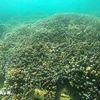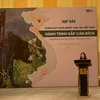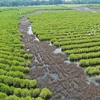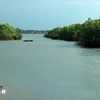Hanoi (VNA) – Vietnamese and Australian experts gathered at an international workshop in Hanoi on March 13 to share experience in building mining policies.
The event was jointly held by the Ministry of Natural Resources and Environment (MoNRE), the National Assembly’s Committee for Science, Technology and Environment and the Australian Embassy in Hanoi.
Highlighting the significance of the geology and minerals to each country’s socio-economic development, Vice Chairman of the NA’s Committee for Science, Technology and Environment Nguyen Tuan Anh said that building and completing a legal corridor for the resources are an important mission, which should be made based on practices and international experience to ensure the effective and sustainable use.
The experience shared at the workshop was expected to help Vietnam complete its Draft Law on Geology and Minerals which will be submitted to the NA for consideration in the coming time, he added.
Australian Ambassador Andrew Goledzinowski said that since the two countries set up their diplomatic ties more than 50 years ago, Australia has supported Vietnam in various areas, including building institutions and policies on geology and minerals. Specifically, Australia helped Vietnam build a draft law on minerals in 1996 that has been applied in Vietnam for tens of years.
As mining enterprises have to tackle major risks associated with legal procedures, Vietnam should work towards a more competitive environment, particularly in terms of taxes and costs, to lure more investment, he stressed.
He added that Australia will continue assistance to Vietnam to improve natural resources management capacity as well as complete institutions in the fields of natural resources, environment and climate change.
Difficulties and bottlenecks in mining investment procedures in Vietnam over the past time were on the table at the event. Experts also discussed issues related to state management of geology and mineral resources.
According to Deputy Director of the MoNRE’s Vietnam Minerals Department Mai The Toan, Vietnam has some 50 kinds of minerals, and 5,000 operating mines. The mining industry makes up of nearly 5% of the country’s GDP.
Highlights of the Draft Law on Geology and Minerals which comprises 12 chapters and 117 articles are the classification of minerals for management, reform of administrative procedures, using state budget to explore strategic and important minerals, enhanced management of sand and gravel in riverbed, lakebed and sea areas, among others./.
The event was jointly held by the Ministry of Natural Resources and Environment (MoNRE), the National Assembly’s Committee for Science, Technology and Environment and the Australian Embassy in Hanoi.
Highlighting the significance of the geology and minerals to each country’s socio-economic development, Vice Chairman of the NA’s Committee for Science, Technology and Environment Nguyen Tuan Anh said that building and completing a legal corridor for the resources are an important mission, which should be made based on practices and international experience to ensure the effective and sustainable use.
The experience shared at the workshop was expected to help Vietnam complete its Draft Law on Geology and Minerals which will be submitted to the NA for consideration in the coming time, he added.
Australian Ambassador Andrew Goledzinowski said that since the two countries set up their diplomatic ties more than 50 years ago, Australia has supported Vietnam in various areas, including building institutions and policies on geology and minerals. Specifically, Australia helped Vietnam build a draft law on minerals in 1996 that has been applied in Vietnam for tens of years.
As mining enterprises have to tackle major risks associated with legal procedures, Vietnam should work towards a more competitive environment, particularly in terms of taxes and costs, to lure more investment, he stressed.
He added that Australia will continue assistance to Vietnam to improve natural resources management capacity as well as complete institutions in the fields of natural resources, environment and climate change.
Difficulties and bottlenecks in mining investment procedures in Vietnam over the past time were on the table at the event. Experts also discussed issues related to state management of geology and mineral resources.
According to Deputy Director of the MoNRE’s Vietnam Minerals Department Mai The Toan, Vietnam has some 50 kinds of minerals, and 5,000 operating mines. The mining industry makes up of nearly 5% of the country’s GDP.
Highlights of the Draft Law on Geology and Minerals which comprises 12 chapters and 117 articles are the classification of minerals for management, reform of administrative procedures, using state budget to explore strategic and important minerals, enhanced management of sand and gravel in riverbed, lakebed and sea areas, among others./.
VNA

